Discover Denmark’s cuisine with 9 local delicacies
There’s flæskesteg for meat lovers, Danish blue cheese for vegetarians and the delicious smørrebrød for everyone. With this list you’re fully prepared to hit the town and taste the best dishes served in classy restaurants and street stalls in Denmark.
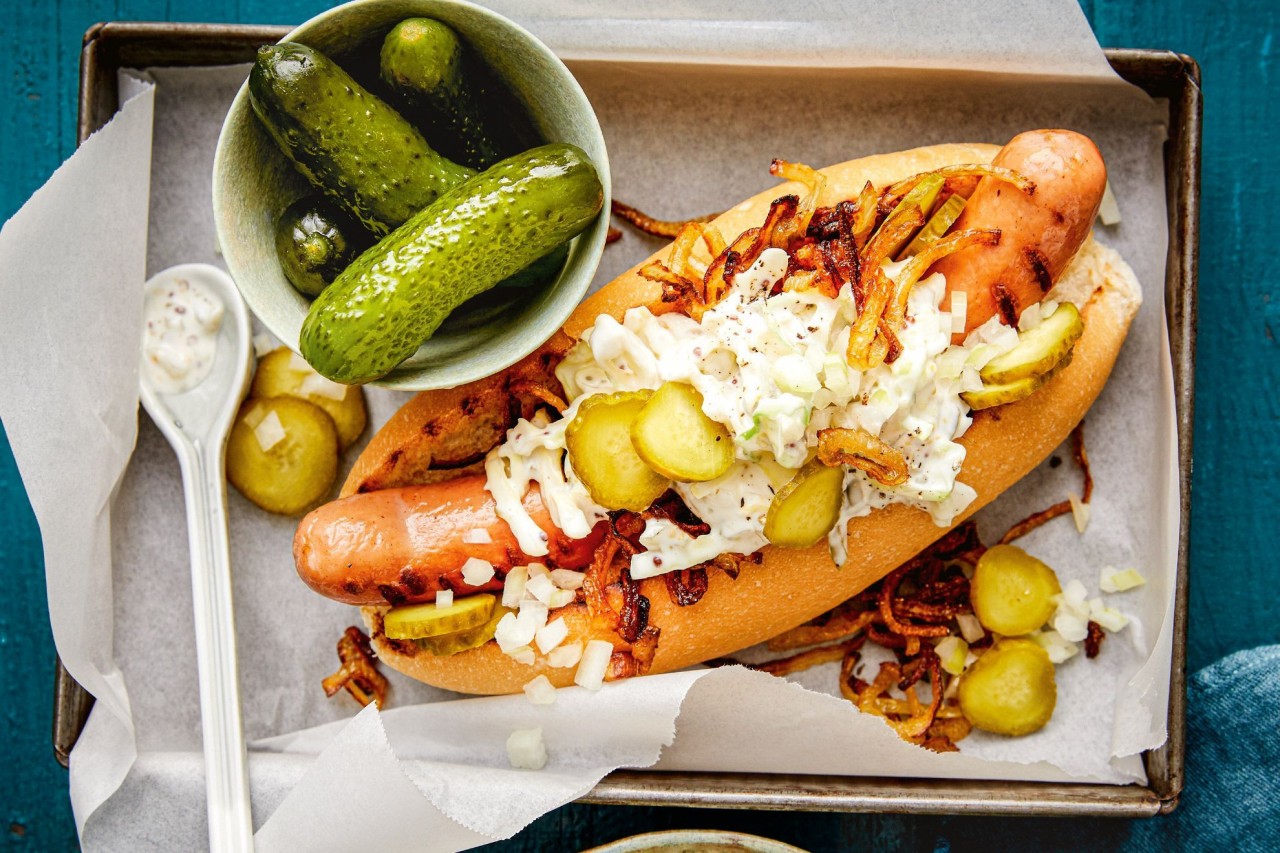 |
| The Danish favorite is a red sausage, which is boiled and served with a bread roll and a dollop of sauce. |
Pølser (Sausage)
With so many hot dog stalls spread all around Copenhagen, the city almost has the smell of sausages (pølser in Danish) lingering in the air. A favorite bite for locals, is a red pork sausage (rød-pølse) in a crusty bun covered in ketchup, mustard and remoulade with fried crispy onions and pickles on top. If you’re looking for beef or chicken sausages, the city’s hot dog stands won’t disappoint you. Copenhageners’ new obsession are the organic hot dogs at Døp or the super spicy sausages at Pølse Kompagniet. Døp has its stands close to the Round Tower and Church of the Holy Ghost, while Pølse Kompagniet serves its delicacies at Torvehallerne and Copenhagen Street Food.
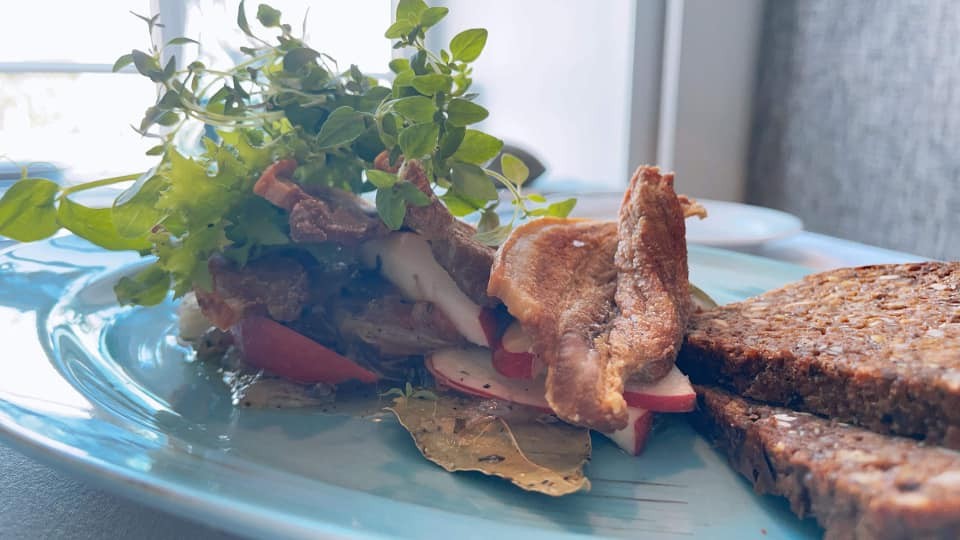 |
| Source: Restaurant Gilleleje Havn & Krostuen |
Æbleflæsk (Danish apple pork)
Apple pork dates back to the middle of the 18th century, when people in the countryside cooked it in order to give them energy and keep them warm during the hard winter days. Apart from its nutritional value, æbleflæsk is also very delicious, so the recipe lasted through time and nowadays is served in restaurants all over Denmark. As you’ve probably guessed, the recipe includes pork and apples. Onion, sugar and butter are also added in the mix, giving that special taste.
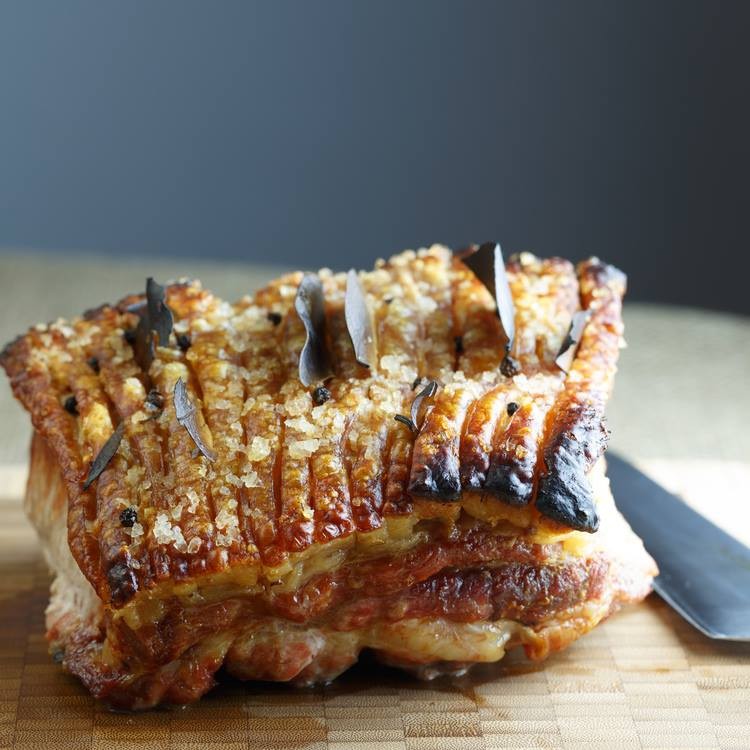 |
| Danish Pork Roast - Flæskesteg |
Flæskesteg (Pork roast)
Pork is a vital ingredient in Danish cuisine. Locals use it in different forms and recipes. One of the most beloved meals is flæskesteg (translated simply means a pork roast). It is considered one of the most typical national dishes. The salty crispy rind and the smell of the dried bay leaves are what makes this dish special. Every Christmas dinner has a flæskesteg plate while you can also find it at the city’s Christmas flea market stalls, where it is served in a sandwich filled with vegetables and mayonnaise or remoulade.
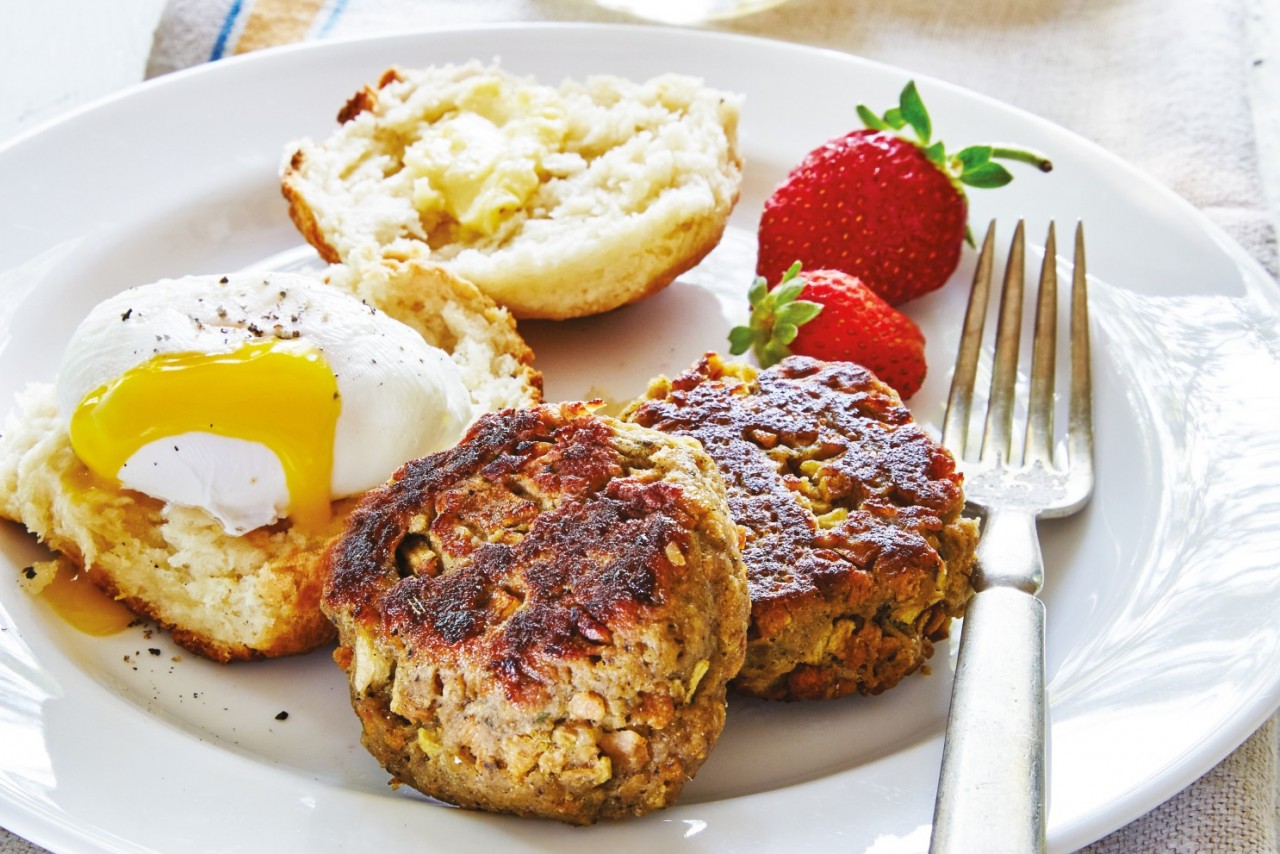 |
| What would you go for; vegan or meat Frikadeller. |
Frikadeller (Meat balls)
Frikadeller translates to mean ‘meatballs’ and is one of the Dane’s most beloved dishes. It’s not a special recipe, but as locals include them quite often in their meals, they couldn’t be missing from this list. Pork (sometimes mixed with beef), milk, eggs, onions and flour make a delicious combination that after being fried in oil or butter, turns into the small round balls that young and old put on their smørrebrød or accompany with boiled potatoes and salad.
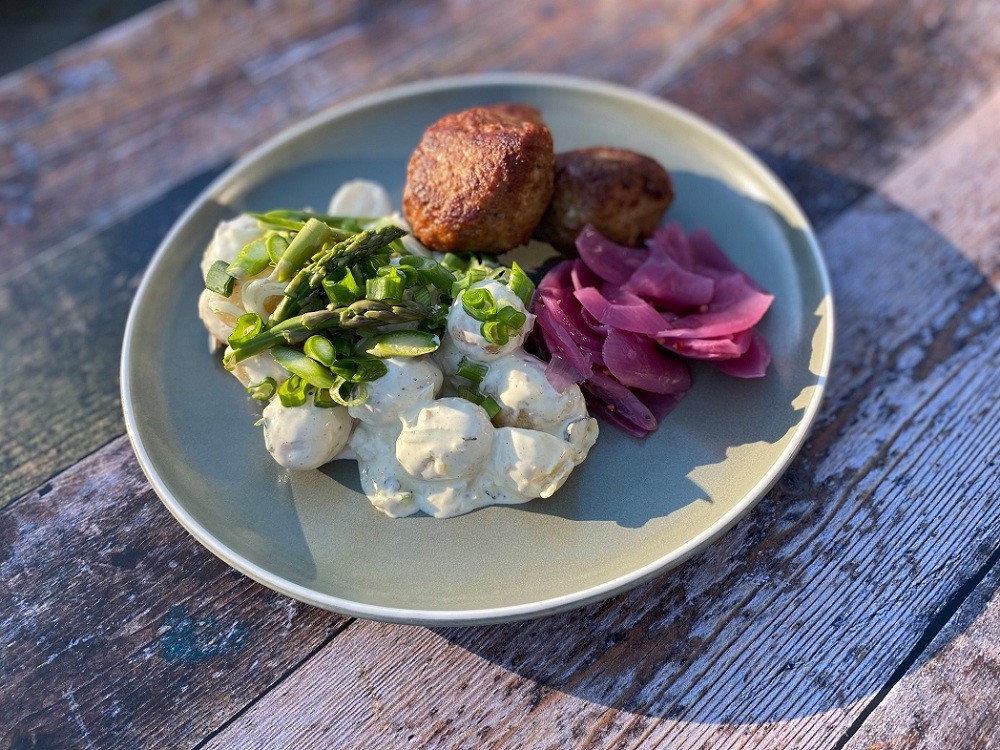 |
| Fish cakes, creamy potato salad and pickled red onions. Source: Kålhøgen |
Fiskefrikadeller (Danish Fish Cakes)
Codfish can be cooked various ways for different recipes but ask any Dane which dish is the best and you’ll get only one answer: fiskefrikadeller. When codfish is mixed with fresh lemon juice, onions, dill and parsley, the result is delicious and that’s why this meal is so beloved among young and old. Danes dip their favorite fish balls in their equally favorite sauce, remoulade. The perfect accompaniment to fiskefrikaddeler are fresh vegetables and boiled potatoes.
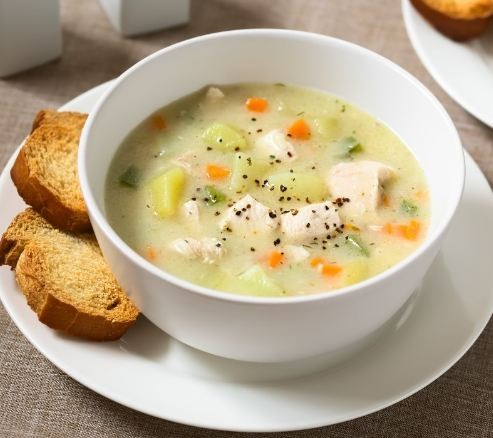 |
| Danish Potato Soup. Source: Dexam |
Soup
A bowl full of soup is always nice for a cold day and as winter in Denmark lasts forever several months, the hot meal couldn’t be missing from the Danish traditional food list. Potato, green onions, sour cream and thyme are the basic ingredients for a tasty potato soup. Another popular soup that has defied time is the pea soup (gule ærter) which is mixed with pork, carrots, celery and onions.
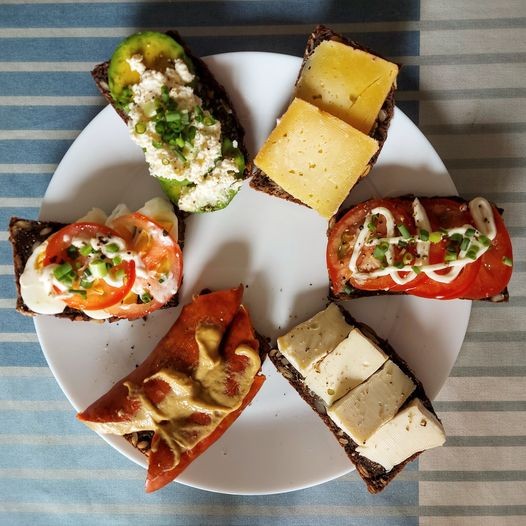 |
| Smørrebrød is bread with butter and toppings. Danes eat it at least once a day, usually as a packed lunch but also at festive occasions like the office Christmas party. Source: Vinh Prag |
Smørrebrød (Open-faced sandwich)
Danes have smørrebrød for breakfast, lunch and dinner. The typical Danish snack is basically an open sandwich which consists of a dark brown rye bread slice, topped with various ingredients. Locals usually spread a thin layer of sauce and add a piece of their favorite fish or meat then some fresh herbs or vegetables. It doesn’t take long to make and it is rich in vitamins and protein. You’ll find it in every restaurant, but you can also buy the ingredients you love from the city’s supermarkets and create your own.
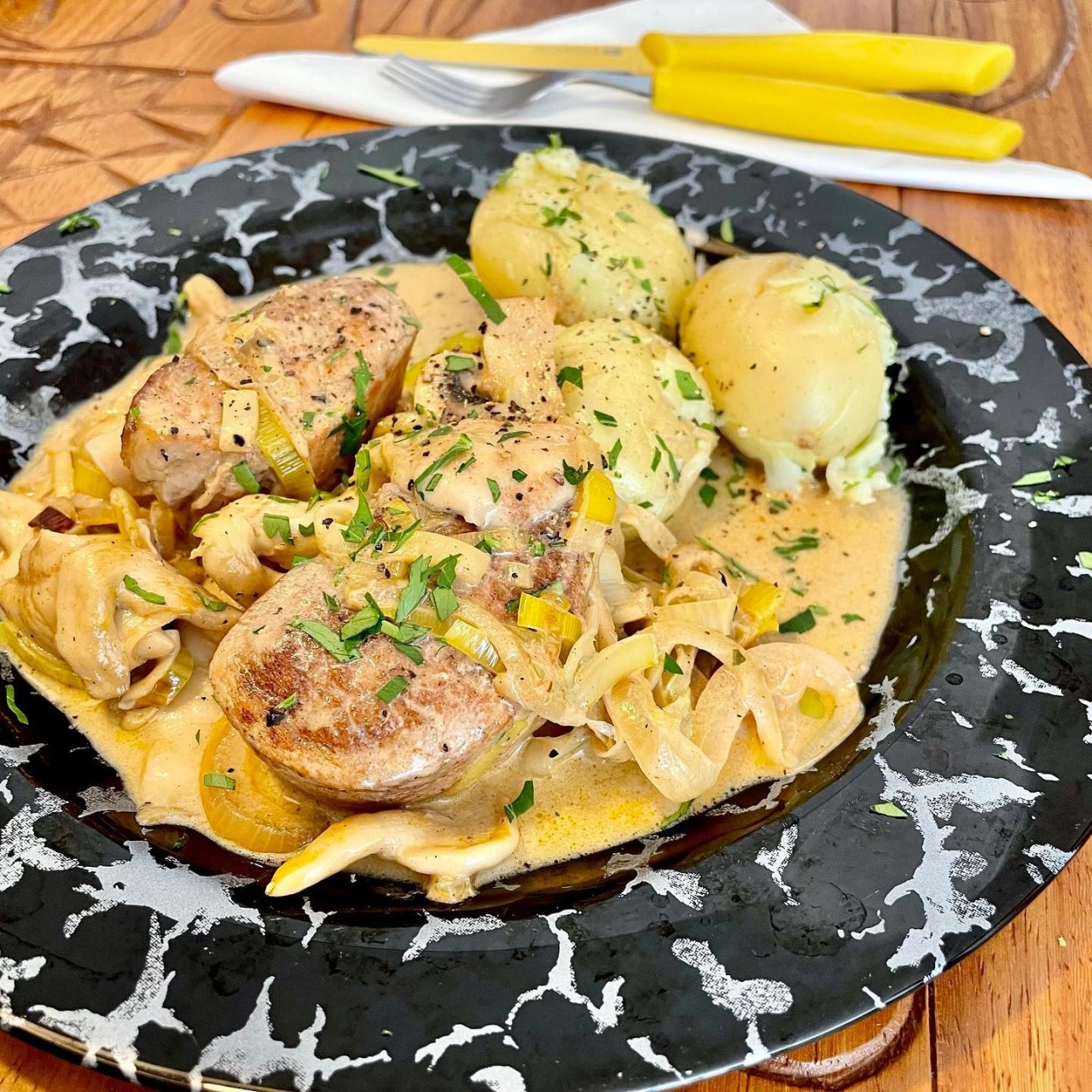 |
| Danish pork tenderloin medallions or mørbradbøffer med bløde løg as it is called in Danish, is a classic in the Danish cuisine. |
Mørbradbøffer
One of the most typical Danish dishes is mørbradbøffer, which is pork tenderloin fried in lots of butter and marinated with heavy cream. Some locals add bacon slices and mozzarella cheese for extra taste, while those who like spicy foods add a pinch of cayenne pepper. It is served with fried onions and mushrooms and it’s accompanied by potatoes or salad. Every nation has a specific dish they think of as ‘grandmother’s food’ and for Danes, it is mørbradbøffer.
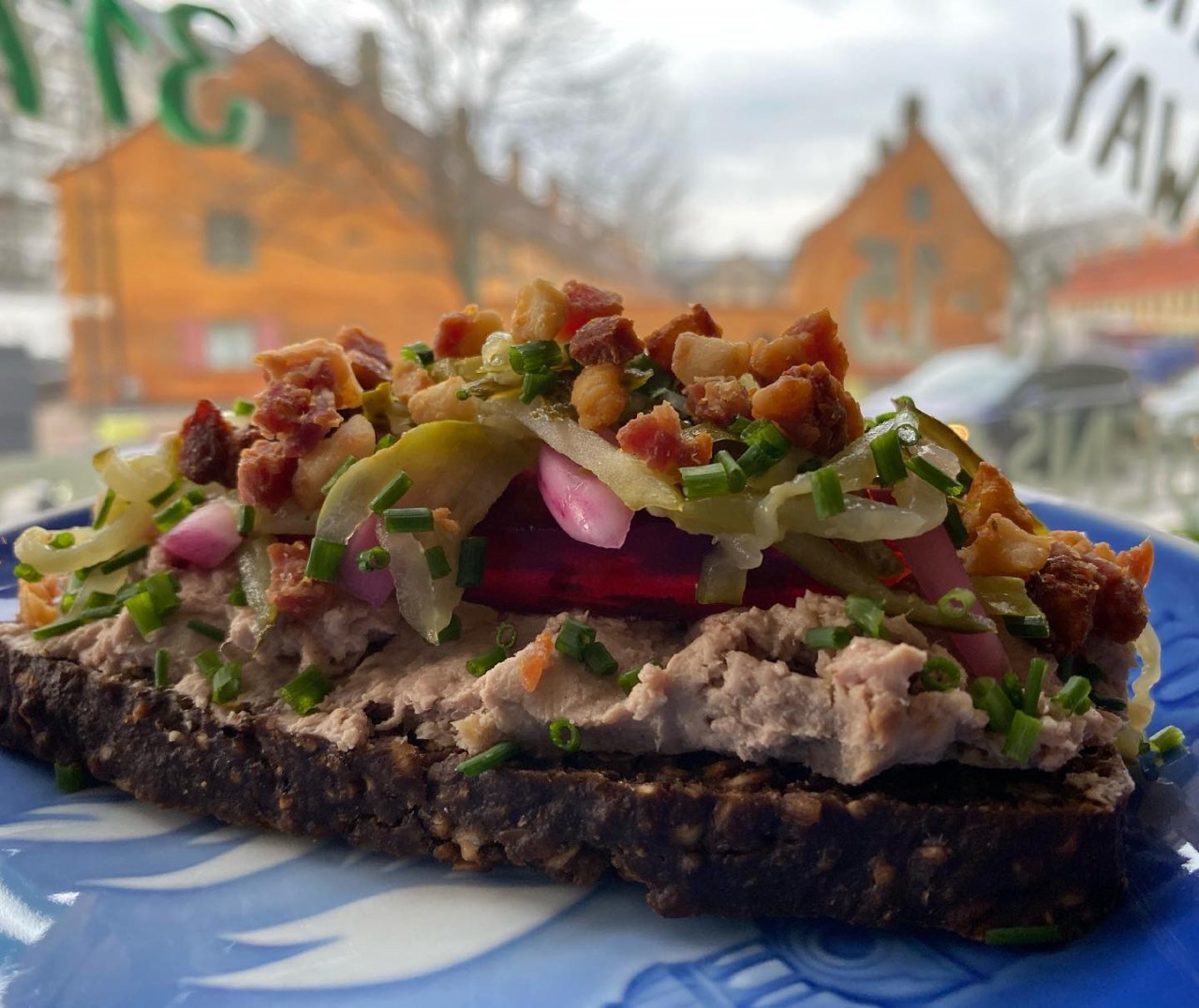 |
| Leverpostej, pronounced Liwer-po-stigh is a traditional Danish pork liver pate which is served hot on rye bread and garnished in various ways. |
Leverpostej
Leverpostej translates to mean ‘liver pate’ and it is among the favorite smørrebrød spreads for non-vegetarian Danes. It is a mix of pork liver, onion, butter, eggs, milk and spices and it can be served both warm and cold. As it is a typical Christmas recipe, a bowl of leverpostej is never missing from a festive dinner. In the 19th century, only rich people could taste this topping on their sandwiches as it was very expensive. However, nowadays it is served in every restaurant and supermarket around the city at quite low prices.
| Travelling to Denmark After 548 days with restrictions to limit the spread of Covid-19, Denmark’s high vaccination rate has enabled the Scandinavian country to become one of the first European Union nations to lift all domestic restrictions. The return to normality has been gradual, but as of Sep.10, the digital pass — a proof of having been vaccinated — is no longer required when entering night clubs, making it the last virus safeguard to fall. The Danish travel restrictions classify all countries and regions into four colour categories: green, yellow, orange and red. These categories determine which rules apply to you, according to coronasmitte.dk. Requirements also depend on whether you are travelling with a negative test, have been vaccinated or previously infected with Covid-19, your country of residence, and where you are travelling from. Some travellers will need to document a negative test upon arrival. Travellers from some countries outside EU/Schengen will also need to isolate for up to 10 days. You might need to get a test upon arrival in Denmark. Use the travel guide and the links above to see which rules apply to you. PCR and rapid antigen tests are free of charge in Denmark. Both tests are available in the public system. You need to register at covidresults.dk to get a PCR test and see your test result. Typically, PCR test results are ready after 24 hours. You do not need to make an appointment to get a rapid antigen test. Typically, rapid antigen test results are ready within 15-30 minutes. |
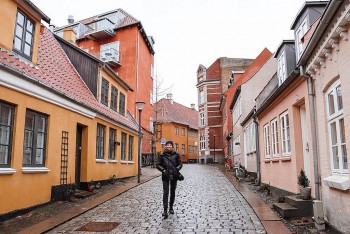 | First Covid-19 Free Country: Visit These Beautiful Destinations in Denmark As the first country that is Covid-19 free, Denmark is a beautiful destination with many gorgeous spots, delicious delicacies and interesting activities around the country. |
 | Danish Developer Ørsted Partners with Vietnamese T&T Group to Make Offshore Wind Power Plants Vienam's T&T Group and Danish developer Ørsted are investing USD 30 billion in offshore wind power development in Vietnam. |
 | World's Biggest Sandcastle Built in Denmark, Taking 5,000 Tons Of Sand - Video Blokhus, a small seaside town in Denmark now has a claim to fame: Home of the world's largest sandcastle. |
Recommended
 World
World
India-EU trade agreement expected to be promoted in the future
 World
World
German Chancellor Merz begins his first state visit to India
 World
World
Vietnamese Lunar New Year Food Fair 2026 Showcases Cultural Identity in Malaysia
 World
World
India named President of BRICS+ for the 2026 term
Popular article
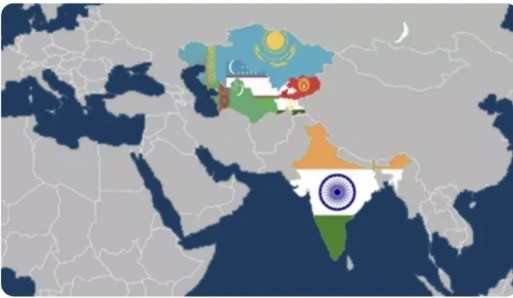 World
World
India strengthens defense and security ties with Central Asia
 World
World
India–Brazil–South Africa (IBSA) Dialogue Forum: An Assessment – Analysis
 World
World
India’s package for exporters signals confidence in Southeast Asia markets
 World
World







